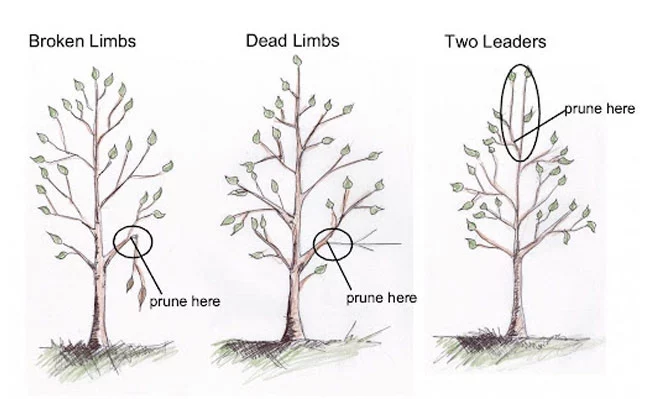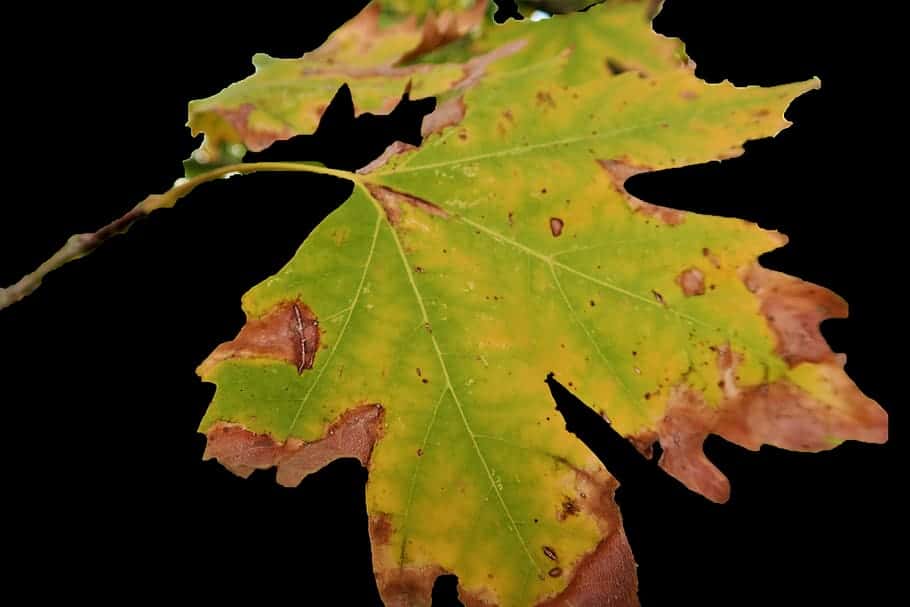How to Plant Pistachios Step by Step: [Guide + Images]

The pistachio is one of the nuts that provides the most nutrients and one that best fits a wide variety of dishes.
And although it is not a very common crop, its popularity has been increasing in recent years, as it is highly profitable, in contrast to theFew planting requirements.
If you are thinking of planting pistachio trees, read on. This article interests you.
Important points to plant Pistachios:
- When? We want to plant pistachio at the end of March.

- Where? It requires a lot of sun.The pistachio is a species adapted to temperate and dry climates. It withstands droughts well.
- Harvest time? The tree can take up to 7 years to bear the first fruits.
- How do we prepare the land? The ideal for its cultivation, however, are deep, well-drained, sandy loam soils.
- How do we water? It reacts better to infrequent abundant watering than to small waterings very frequently. Localized irrigation is recommended to avoid waterlogging.
- How do we sow? Here step by step.
- How do we harvest? You will know the right time to harvest the pistachio fruit, when it shows an opaque color and the shell slightly separates from the skin, not before or after this.
- Plagues and diseases? Birds, Homoptera, Alternaria.
What do we need to plant pistachio?
When should it be sown?
As it is a fruit tree, it is recommendedplant pistachios at the end of March.
May and early June are also a good time, since it corresponds to the time when all tree species are generally planted.
The pistachio can flower between April and May, so frost does not represent a serious risk.
The harvest takes place from the end of August to the beginning of October.
Where to plant pistachio?
The pistachio is a species adapted to temperate and dry climates.
Depending on the variety and the region, it can withstand temperatures between 38 and 45 ºC.
Its resistance to high temperatures decreases when the atmospheric dryness is very prolonged, which can cause the production of fruits to be interrupted,
It adapts well to regions with long, dry summers and winters of 800 hours – cold to 7 ºC –
Requires plenty of sun, to grow healthy and productive, and to resist the attack of pests and diseases.
Although it resists dry and violent winds very well, it prefers soft breezes, as they favor fruit set.
How often should it be watered?
 It is a plant that is very resistant to drought and high summer temperatures, but it does not tolerate excess humidity. It is said that it can reachtolerate up to 5 years of drought.
It is a plant that is very resistant to drought and high summer temperatures, but it does not tolerate excess humidity. It is said that it can reachtolerate up to 5 years of drought.
It reacts better to infrequent abundant watering than to small waterings very frequently. Localized irrigation is recommended to avoid waterlogging.
During the summer, you can water the tree every ten days with enough water, avoiding waterlogging.
How do we prepare the land?
 It adapts to a wide variety of substrates, whether poor, calcareous, saline, highly alkaline or slightly acidic.
It adapts to a wide variety of substrates, whether poor, calcareous, saline, highly alkaline or slightly acidic.
The ideal for its cultivation, however, are deep, well-drained, sandy loam soils.
The values ofideal pH are between 6.0 and 8.0
As a particular fact, although the deep and fertile lands are little used for its cultivation, in reality very good results are obtained, even doubling the production.
In soils with calcareous content, this should not be less than 10%, since it is a fundamental element for the formation of the fruits.
In addition, its roots absorb zinc very well.
How to plant pistachio step by step
- Germinate the seed. The best way to grow pistachios effectively is to germinate the seed. To do this, place them in a deep bowl filled with water and let them soak overnight.
- Sow the seeds in a pot. Get a pot of at least 15 centimeters and fill it with a good potting mix, making sure it has good drainage.
- Place the seed at a depth of 2 to 5 centimeters. Then, cover it with soil and place the pot in a well-lit place.
- Once the shoots have started to grow you will need to transplant them. Preferably, do it during the winter, in the period of vegetative rest
- Clear the ground. It removes weeds and remains of previous crops and all kinds of residues to ensure that your pistachio receives the correct amount of nutrients.
- All plants must be pulled out by the roots to prevent them from growing back.
- Prepare the ground. Moisten the ground before planting; This reduces the risk of the shoots being moved by the force of the water.
- Put the shoots into the ground. Form a mound 5 cm high and place each shoot in the center, pushing them up to 3 cm deep. The mounds will prevent water from pooling near the roots of the plant as it grows.
- Differentiate between male and female plants. Identify the sex of your pistachio: male plants flower first. They have long stems with several flowers. Instead, female plants have larger flowers and closer to the trunk.
- For them to produce fruit, you will only need one male plant for every ten females. The rest you will have to remove.
- Regularly prune the plants. Throughout the life cycle of the pistachio, we will remove the leaves in poor condition. This is recommended to be done at the beginning of winter, since the wood of the tree is inactive and allows easy and safe removal. However, dead branches should be removed immediately at any time of the year.
- To prune branches, use garden shears to make a clean cut near the base of the branch. When pruning, be careful not to cut off suckers that are 16 inches from the ground. When pruning, you should leave as few as three suckers.
- If the tree is female, be careful to leave the suckers that are between one meter and two meters high.
- If your tree is male, you can prune it as soon as it reaches two meters.
- Consider grafting. The pistachio takes up to seven years before it begins to bear fruit.
- The fact that you have a strong and healthy tree does not guarantee that it will bear fruit. To make sure it does, you may want to consider grafting.
- In other words, you must place the cutting of a tree that does bear fruit in the trunk of your tree so that they merge and become a single plant.
There are different ways to make grafts.
We recommend that you consult an expert to guide you in the most effective way to do it. You will also need to make sure that both species you plan to graft are compatible.[/su_note]
How to harvest pistachio
 The first harvest occursbetween 30 months and 7 years of age.It occurs during the months of August and October, depending on the area.
The first harvest occursbetween 30 months and 7 years of age.It occurs during the months of August and October, depending on the area.
You will know the right moment to harvest the pistachio fruit, when it shows an opaque coloration and the shell separates slightly from the skin, not before or after this.
Some varieties bear fruit every two years, or tend to give a very abundant harvest one year and a poor one the next.
Once the skin begins to open it means that they are ripe. The fruits are then harvested, cleaned, sorted and roasted for consumption.
When protected in plastic bags, they can be kept for 6 weeks in the refrigerator. If they are frozen, the duration can be longer, up to 6 months.
Common pests and diseases
The pistachio is a very rustic crop, so pests and diseasesthey affect him little.
Some of the most common pests and diseases are:
birds
 Birds can considerably reduce the pistachio harvest.
Birds can considerably reduce the pistachio harvest.
For control, you can hang pieces of shiny metal or tin sheets that move in the wind from the branches. Compact discs work too.
Use a scarecrow.
Homoptera
Members of this family include gall – producing aphids and many other such insects.
Galls are abnormal structures on plant tissues and organs that develop in response to an insect invasion.
They use the gall as a means of obtaining nutrition and shelter from the environment and natural enemies, inducing viruses and other diseases and damaging production and tissues.
Currently, there are few means of combating parasitic homoptera of pistachio, the most effective being the collection and destruction of all infected parts of the tree.
alternate
The fungus is spread by wind or water, increasing in humid conditions.
Plants are more susceptible to being affected when they are subjected to stress conditions or nutritional deficiencies.
To combat it, good ventilation of the tree is recommended.
Among the active ingredients of possible use we have horsetail and potassium soap.
verticillium wilt
 Verticillium or Verticillium wilt is a common soil fungus that thrives in temperate climates around the world and can be present in the soil for decades.
Verticillium or Verticillium wilt is a common soil fungus that thrives in temperate climates around the world and can be present in the soil for decades.
Verticillium wilt overwinters in the soil as dormant mycelium or tiny dormant black structures called microsclerotia, waiting for favorable conditions to return.
They enter damaged plant tissue through the roots and multiply. Many common weeds, such as dandelions and weeds, can be Verticillium host species.
Verticillium wilt is a disease that affects more than 350 species of eudicolous plants. It is caused by six species of Verticillium fungi: Verticillium dahliae, Verticillium albo-atrum, Verticillium longisporum, Verticillium nubilum, Verticillium theobromae, and Verticillium tricorpus.
Many plants with significant economic weight are susceptible, such as cotton, tomatoes, potatoes, oilseed rape, aubergines, peppers, and ornamental plants, as well as others in natural vegetation communities.
Many species and cultivars of eudicots are resistant to the disease, and all monocots, gymnosperms, and ferns are immune. To know more: Verticillium wilt in the Orchard: What is it? How do we identify it?
How long does pistachio live?
It is a productive tree of great longevity that can live for up to 300 years.
How long does it take to grow the pistachio?
It grows relatively quickly and can be considered an adult tree around 5 years of life.
How long does it take to produce fruit?
It begins to produce fruit around 3 years after it has been sown.
However, it must be considered that this production will not be as abundant.
Can it be grown in a pot?
It can be grown in a pot, but it is recommended that this only be during the first months of life. Afterwards, it is better to take it to the garden.
How many times does the pistachio produce fruit?
It produces between 1 and 2 loads of fruit per year, depending on the conditions where it is planted.
Throughout its life it is capable of generating the maximum of its production for up to 40 years.
Should the pistachio be pollinated to obtain fruit?
This process is carried out by means of the wind, which is in charge of carrying the pollen from the male trees to the female trees.
How cold can pistachio tolerate?
It has no problems with cold or frost. In fact, it is one of the species capable of withstanding temperatures of up to -40°C without suffering.
How many pisctachos can be planted per hectare?
The planting of the pistachio tree varies from 100 to 200 specimens per hectare.
Here you have to take care that there is at least one male specimen for every 7 female trees.
What kind of fertilizer do pistachios need?
Fertilization is worked with NPK fertilizers applied during the months that correspond to spring and summer.
In addition, it requires a dose of magnesium to balance the internal nutrients of the tree.
How much heat and/or drought can the pistachio tolerate?
It is a very tolerant species to summer heat and even to the most intense temperatures, withstanding climates that exceed 40° C.
It is capable of resisting droughts even if they are prolonged. In fact, there are rainfed crops that produce less than irrigated crops.
To learn more about planting trees:
- Plant an almond tree.
- Plant a cactus.
- Plant bamboo.
- Plant a lemon tree.
- Plant a mango.
- Plant an avocado tree.
- Plant a cherry tree.
[pt_view id=”f54fcb1evj”]

![Photo of Kiri: [Cultivation, Irrigation, Care, Pests and Diseases]](https://www.complete-gardening.com/wp-content/uploads/2021/06/Kiri-390x220.jpg)

![Photo of Afelandra or Zebra Plant: [Care, Planting, Irrigation and Substrate]](https://www.complete-gardening.com/wp-content/uploads/2021/06/Zebra_Plant_1583790156-390x220.jpg)
![Photo of Plant Asparagus: [Care, Needs, Irrigation, Fertilizer and More]](https://www.complete-gardening.com/wp-content/uploads/2022/08/plant-asparagus-care-needs-irrigation-fertilizer-and-more-390x220.jpg)